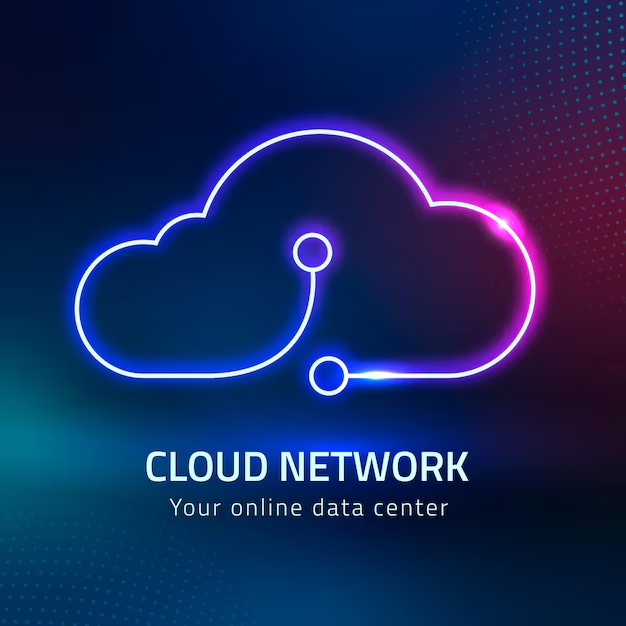Cloud computing has transformed the way businesses operate, offering scalable solutions, increased flexibility, and enhanced productivity. From startups to established enterprises, companies are adopting cloud computing to meet the growing demand for digital transformation, data storage, and efficient IT infrastructure. This comprehensive guide explores the key technologies behind cloud computing, the various cloud services available, best practices for implementation, and why businesses should consider embracing this powerful tool.
Understanding Cloud Computing
Cloud computing refers to the delivery of computing services such as servers, storage, databases, networking, software, and analytics over the internet. Instead of maintaining physical hardware and software systems, companies can use cloud platforms to access resources on-demand. This model provides greater scalability, cost-efficiency, and agility compared to traditional IT setups.
Cloud computing is based on a shared pool of configurable resources that users can access remotely. Users can rent these resources without the need for large capital investment in infrastructure. Popular cloud service providers include Amazon Web Services (AWS), Microsoft Azure, and Google Cloud, each offering a range of services suited to different business needs.
Key Cloud Computing Technologies
Cloud computing is built on several key technologies that ensure its reliability and scalability:
- Virtualization
Virtualization is the foundation of cloud computing. It allows multiple virtual machines (VMs) to run on a single physical machine, thereby optimizing hardware usage. Each VM operates as an independent system, with its own resources, without impacting other VMs. This enables businesses to create flexible and scalable environments. - Containerization
Containerization allows applications to run in isolated environments, making them portable across different computing environments. Unlike virtual machines, containers are lightweight and share the same operating system, which enhances performance and reduces resource overhead. Tools like Docker and Kubernetes are widely used to manage containerized applications in the cloud. - Automation and Orchestration
Automation refers to using tools to perform repetitive tasks such as provisioning servers or deploying updates. Orchestration goes a step further, coordinating complex processes like load balancing, scaling, and configuration management. Cloud automation improves operational efficiency and reduces the chance of human error. - Edge Computing
Edge computing extends cloud capabilities to the edge of the network, closer to where data is generated. By processing data at or near the source (such as IoT devices), businesses can reduce latency, improve response times, and decrease bandwidth costs.
Types of Cloud Services
Cloud computing services are typically divided into three major categories:
- Infrastructure as a Service (IaaS)
IaaS provides businesses with virtualized computing resources, including servers, storage, and networking components. This service is ideal for businesses that need to build and manage their infrastructure but do not want the overhead of maintaining physical hardware. Examples of IaaS providers are AWS, Microsoft Azure, and Google Cloud. - Platform as a Service (PaaS)
PaaS offers a platform allowing businesses to develop, run, and manage applications without worrying about underlying infrastructure. It includes operating systems, middleware, and development tools. It is suitable for businesses focusing on developing software applications rather than managing hardware. Examples include Google App Engine and Microsoft Azure App Services. - Software as a Service (SaaS)
SaaS delivers software applications over the internet, eliminating the need for on-premises installation or maintenance. It’s ideal for businesses that want to access software tools without managing the infrastructure. Popular examples include Salesforce, Google Workspace, and Microsoft Office 365. - Function as a Service (FaaS)
Also known as serverless computing, FaaS allows businesses to run individual functions or pieces of code without managing the servers that run them. It is event-driven and highly scalable. AWS Lambda and Google Cloud Functions are leading FaaS providers.
Best Practices for Cloud Computing Adoption
Adopting cloud computing can be a game-changer for businesses, but to maximize its potential, companies should adhere to best practices:
- Data Security and Privacy
Ensuring the security of sensitive data in the cloud is paramount. Businesses must understand their cloud provider’s security measures and implement additional security layers, such as encryption, multi-factor authentication, and regular security audits. - Cost Management
While cloud computing offers cost efficiency, businesses need to manage their cloud resources effectively. Regularly review usage patterns, shut down unused resources, and optimize the architecture to avoid overspending. - Compliance and Regulatory Standards
Different industries have specific compliance requirements. Before migrating to the cloud, businesses should evaluate whether their cloud provider meets the necessary regulatory standards, such as GDPR, HIPAA, or SOC 2. - Backup and Disaster Recovery
Having a robust backup and disaster recovery plan is crucial. Ensure data is backed up regularly, and that the recovery process is tested frequently to minimize downtime during unforeseen events. - Vendor Lock-in Considerations
Vendor lock-in occurs when a business becomes overly dependent on a single cloud provider, making it difficult to switch. Avoid this by designing applications to be portable across different platforms and utilizing open-source technologies.
7 FAQs About Cloud Computing
- What are the main benefits of cloud computing for businesses?
Cloud computing offers benefits like cost savings, scalability, flexibility, improved collaboration, and reduced IT management overhead. - How secure is cloud computing?
Cloud computing can be highly secure if proper security measures like encryption, access controls, and regular audits are implemented. However, security remains a shared responsibility between the cloud provider and the customer. - What is the difference between public, private, and hybrid clouds?
A public cloud is owned and operated by a third-party provider, while a private cloud is dedicated to a single organization. A hybrid cloud combines both public and private clouds to allow data and applications to be shared between them. - Can cloud computing help reduce operational costs?
Yes, cloud computing helps businesses reduce operational costs by eliminating the need for expensive infrastructure and reducing IT maintenance. - What types of businesses benefit from cloud computing?
Any business can benefit from cloud computing, but it is particularly advantageous for startups, small businesses, and companies looking to scale quickly. - How do cloud providers charge for their services?
Cloud providers typically charge based on usage, such as pay-per-use, subscription-based, or tiered pricing models. Costs depend on the resources consumed. - Is it possible to move my on-premise data to the cloud?
Yes, businesses can migrate their on-premise data to the cloud with the help of cloud migration tools and services.
Conclusion
Cloud computing has revolutionized the way businesses operate, offering unparalleled flexibility, scalability, and cost-effectiveness. By embracing cloud technologies and services such as IaaS, PaaS, and SaaS, businesses can innovate and scale rapidly. However, implementing cloud computing requires careful consideration of security, cost management, and compliance standards.
Key Takeaways
- Cloud computing provides a variety of services, including IaaS, PaaS, SaaS, and FaaS, to meet different business needs.
- Virtualization, containerization, and edge computing are key technologies that enable cloud scalability and performance.
- Best practices for cloud adoption include ensuring security, cost optimization, and compliance with industry standards.
- Cloud services can reduce operational costs, improve efficiency, and foster innovation for businesses of all sizes.

